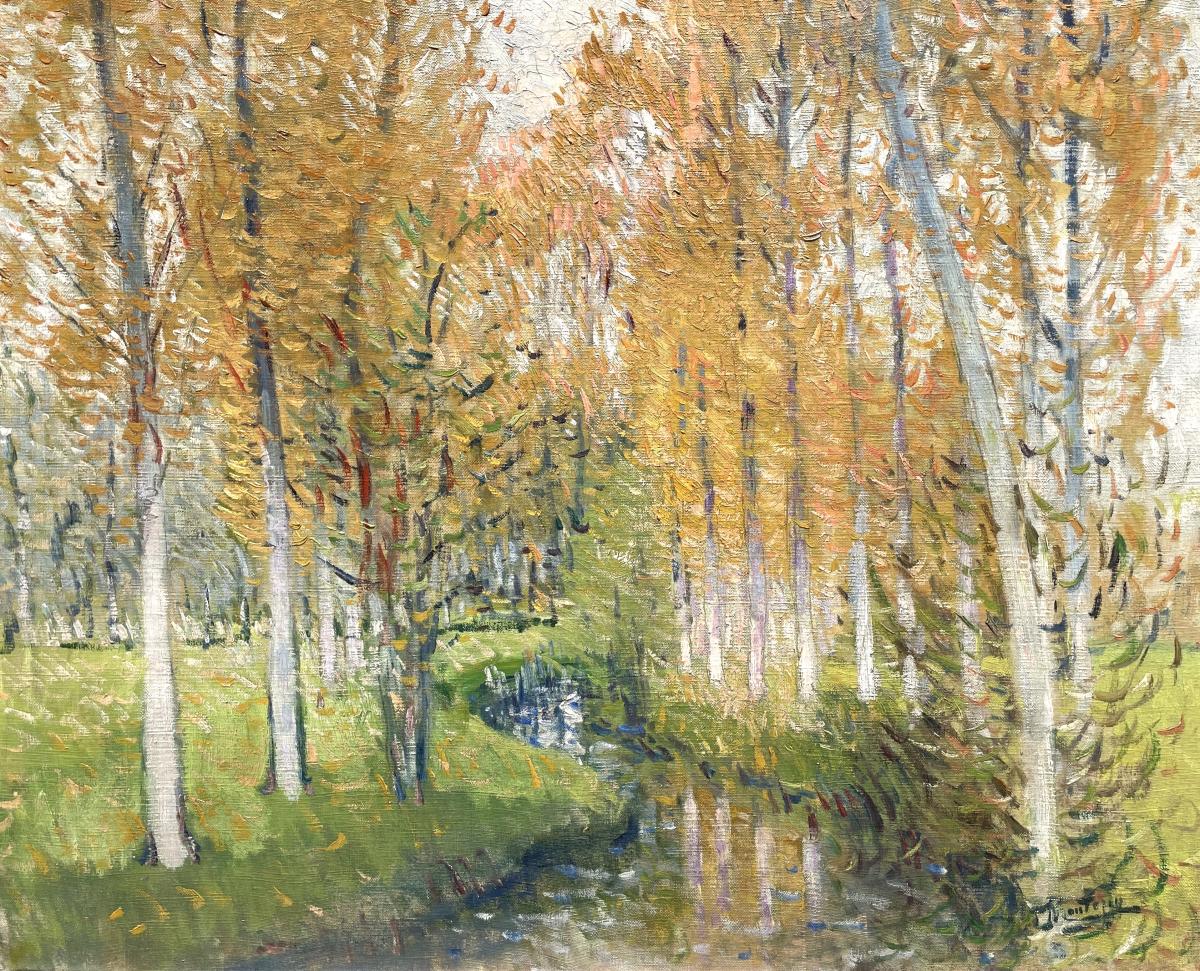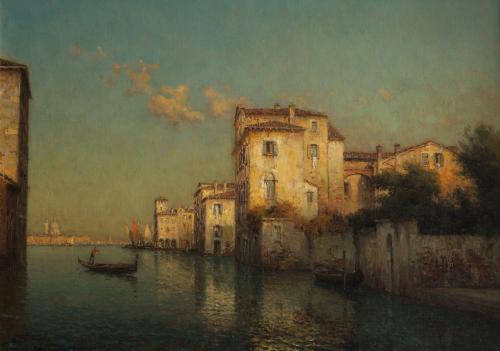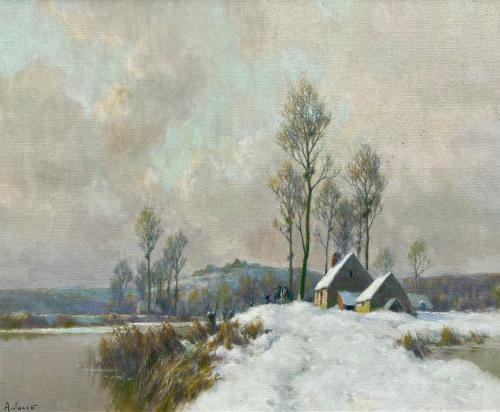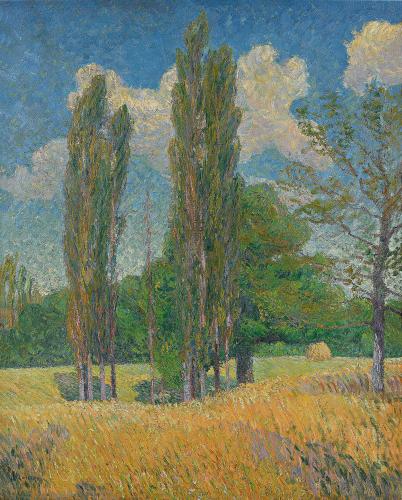

This object is eligible for a Certificate of BADA Provenance
The BADA Standard
- Since 1918, BADA has been the leading association for the antiques and fine art trade
- Members are elected for their knowledge, integrity and quality of stock
- Our clients are protected by BADA’s code of conduct
- Our dealers’ membership is reviewed and renewed annually
- Bada.org is a non-profit site: clients deal directly with members and they pay no hidden fees
One of the most distinguishable Post-Impressionist painters, Pierre-Eugène Montézin was profoundly influenced by the great masterpieces of the Impressionists, most notably the work of Claude Monet and Alfred Sisley. Passionate about the outdoors and the idyllic French rural countryside, despite having spent much of his life in Paris, Montézin was an avid practitioner of ‘en plein air’ painting.
The son of a lace draftsman, Pierre-Eugène Montézin was introduced to the arts at a young age and was entered by his father into a decorative atelier to learn the art of executing murals. This was a strong decorative aesthetic among modernists of the day. Montézin’s passion for hunting and fishing gave him a taste for the outdoors. In 1903 Montézin was introduced to the French Impressionist Ernest Quost, who encouraged him to concentrate on drawing and painting and to study the theories of Impressionism. Following in the footsteps of his Impressionist forebears, Montézin began to paint landscapes, applying the ideals of painting ‘en plein air’. Montezin exhibited his first work at the Salon des Artistes Français in 1903 and was awarded medals at the 1907 and 1910 salon.
When war broke out in 1914, Montézin enlisted and fought at the front, receiving the Médaille Militaire at the battles of the Meuse. At the end of the war, he returned to Paris and resumed painting, spending a year at Dreux and Moret-sur-Loing, concentrating on capturing the rivers, villages, and agricultural scenes of the region under his accomplished brush. Montézin spent very little time in his studio preferring the integrity of working only from nature.
Montézin began to win honours as early as 1920 when he received the Rosa Bonheur Prize, a special award for animal painting named after the famous female animal painter of the 19th century. A seminal moment in his career came three years later, when he became the recipient of the Légion d’Honneur for a landscape painting at the Salon des Artistes Français, the first landscape artist to do so since 1897. Critical reaction to this nomination was explosive. For thirty years no landscape had received the Medal of Honor which had been awarded only to figure painters and painters of historic or classical subjects. For three decades landscapes had been considered a minor form of painting, a fact which made Montézin’s triumph all the more exceptional.
In 1932 the painters of the Salon unanimously elected Montézin as president of the Salon jury awarding him the Médaille d’Honneur. That same year he had a great exhibition in Paris to which the public flocked. 237 canvases were shown, all landscapes, and similar successful exhibitions in Paris followed in 1936, 1938 and 1943. In 1945 he succeeded Edouard Vuillard as the President of the Académie des Beaux Arts.
Montézin was most strongly influenced by the work of Monet and Sisley, and after the First World War he spent a year in the countryside around Dreux and Moret following in the footsteps of Alfred Sisley. He remained loyal to the principles of Impressionism throughout his career despite the emergence of the Cubist, Surrealist and Abstract art movements and, like Paul Cézanne before him, he died whilst painting in the open air in 1946 in Brittany.
In his vigorous old age, still producing beautiful landscapes, he remarked to the famous French critic, Louis Vauxcelles, "The subjects of the landscape painter are less in front of the artist's eyes, than in his heart."
Dimensions
24" x 28¾"The BADA Standard
- Since 1918, BADA has been the leading association for the antiques and fine art trade
- Members are elected for their knowledge, integrity and quality of stock
- Our clients are protected by BADA’s code of conduct
- Our dealers’ membership is reviewed and renewed annually
- Bada.org is a non-profit site: clients deal directly with members and they pay no hidden fees




